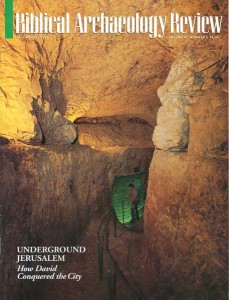
Suspended in motion, this ivory acrobat from the Palace of Knossos, on Crete, the legendary home of King Minos, glides effortlessly through the air. The lithe figure, measuring 11.5 inches long, still displays some of its original, delicate sculpting, with swelling arm muscles, distinct facial features and a carefully modelled ear.

The 16th-century B.C. figurine was discovered with fragments of faience (earthenware decorated with opaque glazes) bulls under a staircase in the palace, excavated in the early 20th century by the British archaeologist Sir Arthur Evans. According to Greek tradition, Minos ruled his Aegean Sea empire from here.
Although we know little about Minoan beliefs—contemporary inscriptions discovered at Knossos, and written in a script Evans called Linear A, remain largely undeciphered—the abundance of images of bulls on Crete suggests that these animals were considered sacred. One common artistic motif depicts acrobats vaulting over the back of a charging bull: A colorful fresco of this activity appears on the walls of the Palace of Knossos. Together, the faience bulls and the ivory acrobat could have formed a tableau of this scene. But the posture of the slender youth suggests it might have been suspended above the animal figurines, ready to jump dramatically onto the back of a bull.
Already a library member? Log in here.
Institution user? Log in with your IP address.

